Golf Shank Secrets: Understanding and Correcting
Can’t Figure Out Why You Keep Shanking It? These Tips and Insights Will Help You Fix the Golf Shank Once and for All.
The golf shank may be the most dreaded shot in the game. You think you’ve got a good shot lined up, then the ball flies low and to the right. Now you’re off course, you’re irritated, and you just wasted stroke.
So what can you do? What causes the golf shank, and how can you avoid it on your next round?
Here are some quick tips for fixing this nightmare of a golf shot.
What is a Golf Shank?
First, let’s clarify what we’re talking about when we talk about the shank.
A shank occurs when you hit the ball off the hosel. The hosel is the socket connecting the shaft of your golf club to the clubhead.
Here is a classic example of a shanked chip shot:
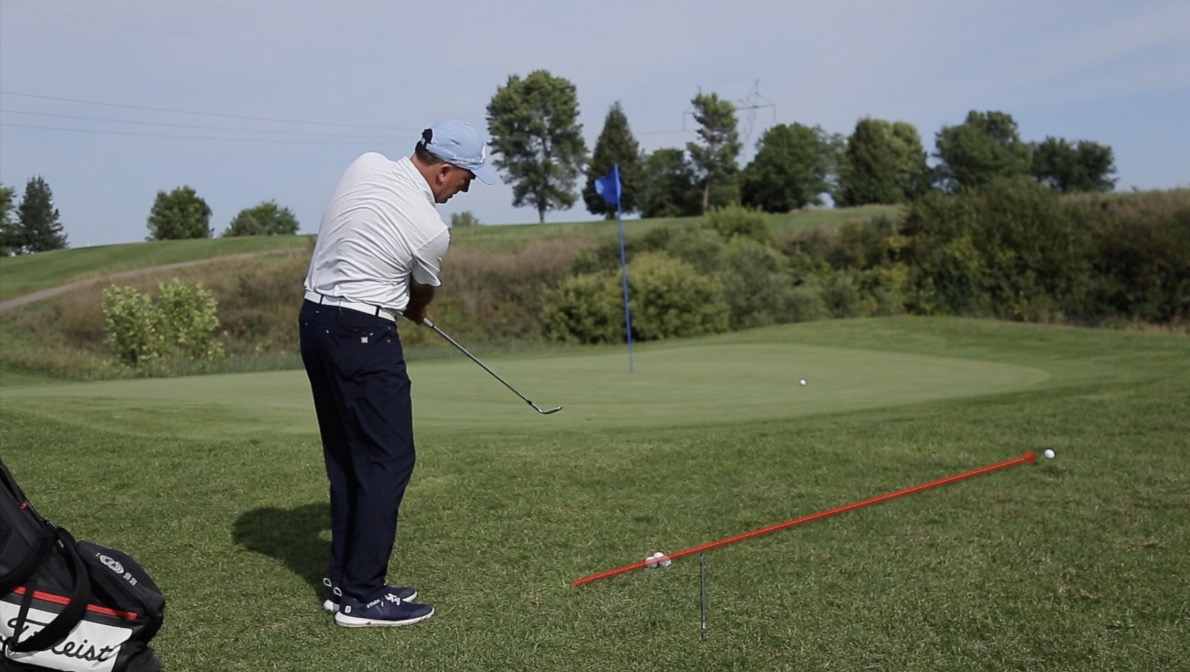
When you hit the golf ball off the hosel, the ball travels super low and far to the right, assuming you’re right-handed. If you’re left-handed, the ball veers to the left.
To put it another way, a golf shank is the quickest way to turn one of the most popular sports into a frustrating pastime.
Golf Slice vs. Shank
Some golfers confuse slices and shanks for understandable reasons. Both shots are aggravating, and both hinder your game with a right-ward ball flight. (Again, that’s if you’re right-handed.)
The difference is that a slice is generally caused by delivering an open club face at impact. A slice happens as a result of the orientation of the club face, not the point of contact. You can still hit the ball in the sweet spot (or off the toe) and hit a slice.
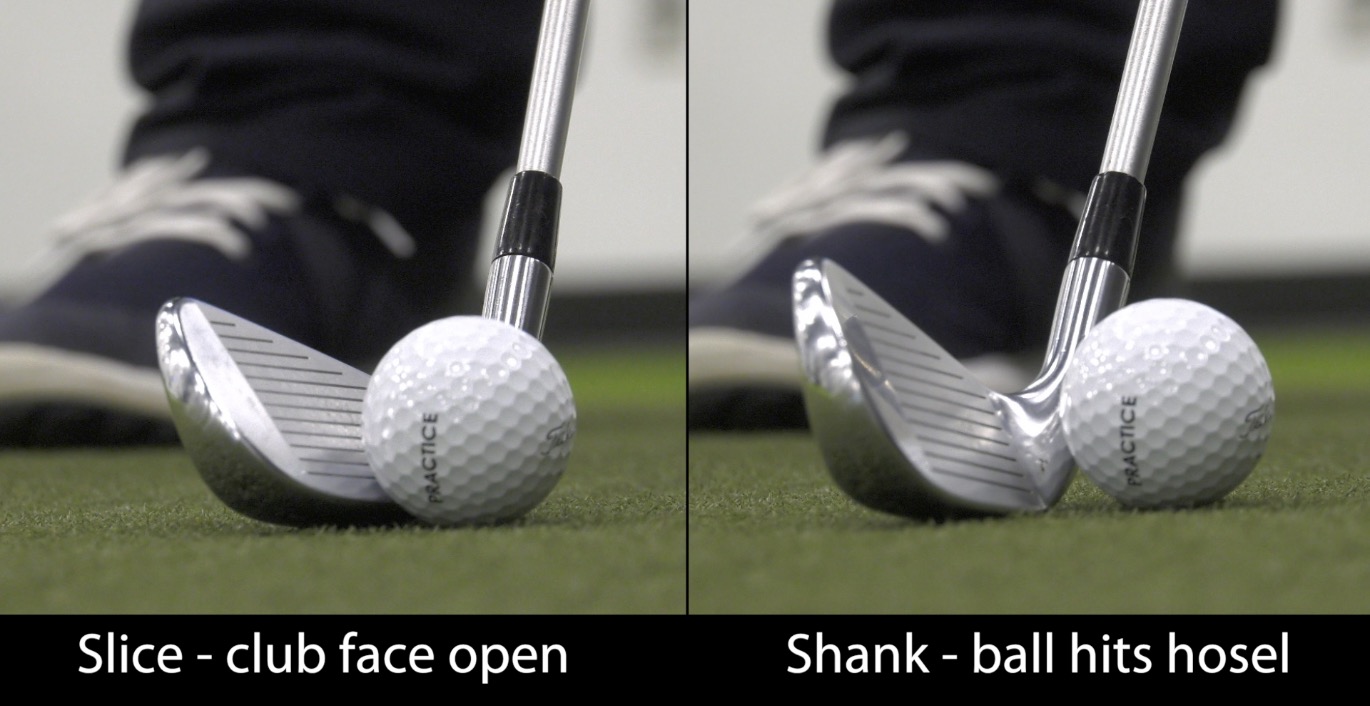
Now, this difference can be hard to feel. Fortunately, you can tell whether you’ve sliced it or shanked it just by observing your ball flight.
- A golf shank travels low and directly to the right.
- A slice gets up in the air and curves to the right.
For now, I’m going to share golf swing tips for overcoming the golf shank only. But don’t worry. If you also need help with your slice, we have plenty of material for you.
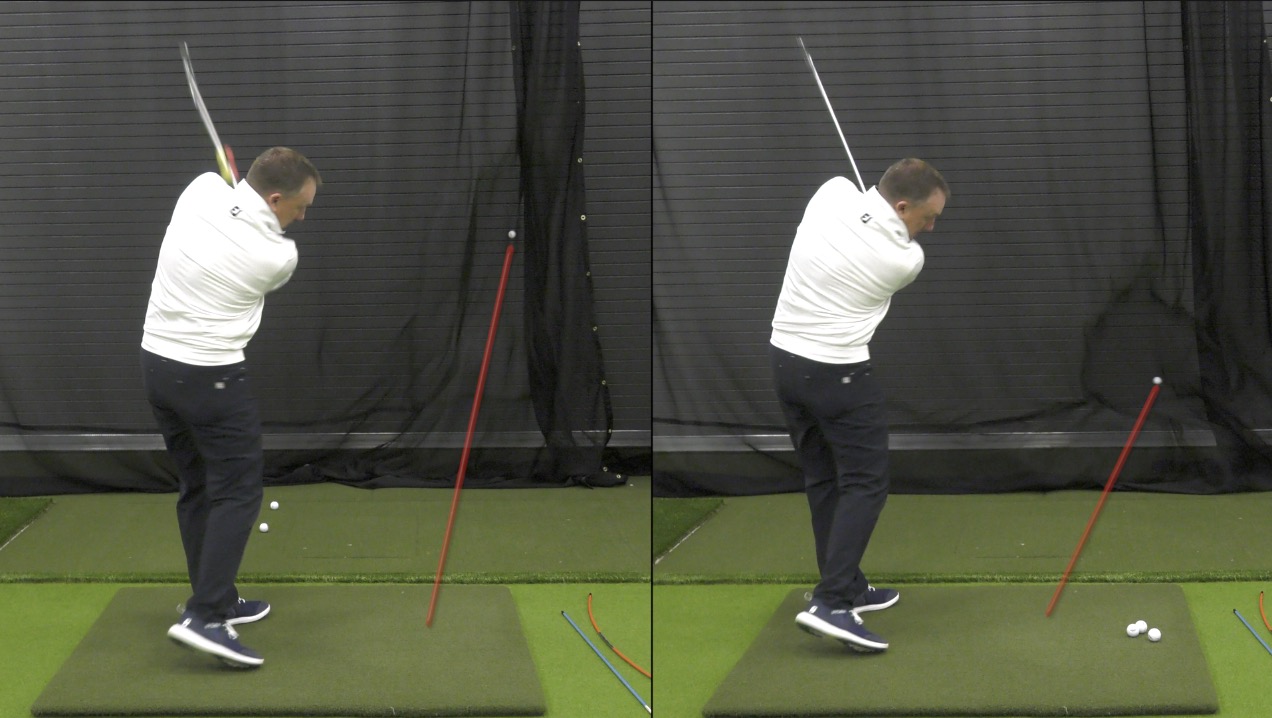
Causes of Golf Shanks
Now that you understand what a shank is and can pinpoint the difference between a slice vs. shank, let’s dig into why this problem happens to begin with.
What exactly causes a shank shot?
Well, that depends on who’s shanking it and what type of shot they’re making.
Why High Handicappers Shank the Golf Ball
Nine times out of ten, when a high handicapper shanks the golf ball, it’s because they’re “swinging too far out to in.”
What does that mean? Well, we are talking about swing path.
Think of what happens in the transition of your golf swing. As you bring your arms back down from the top of your swing, how do they move?
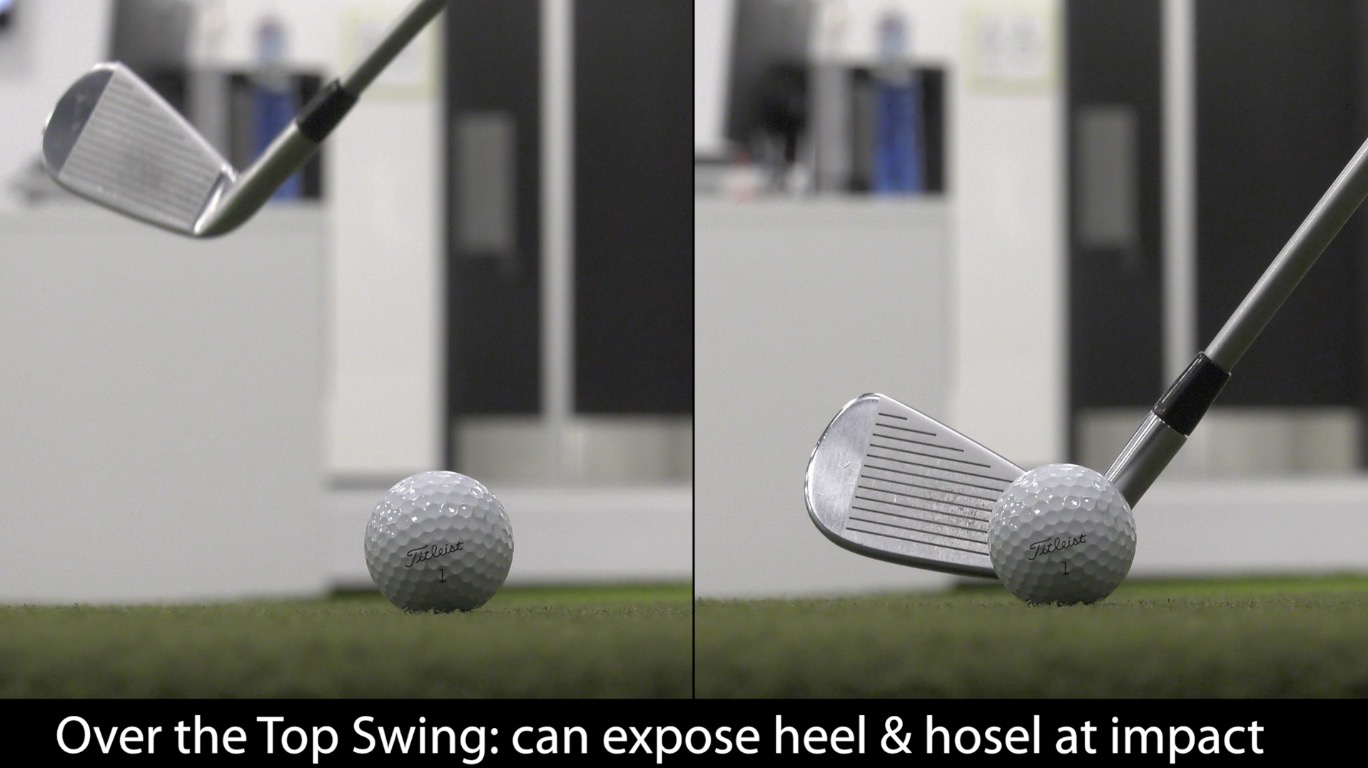
Do your arms travel out and across, rising above the swing plane of your backswing?
Most high handicappers have a habit of doing exactly that. They bring their arms too far out in the transition. This in turn exposes the heel and hosel to the ball at impact, causing the shank.
Why Low Handicappers Shank the Golf Ball
Interestingly, low handicappers also face the dreaded golf shank. Even touring professionals hit hosel rockets from time to time.
So what happens there?
Believe it or not, low handicappers typically have the opposite problem compared to high handicappers. In this case, skilled golfers have a swing path that brings the club head down too far from the inside . . . another swing motion that accidentally exposes the heel.
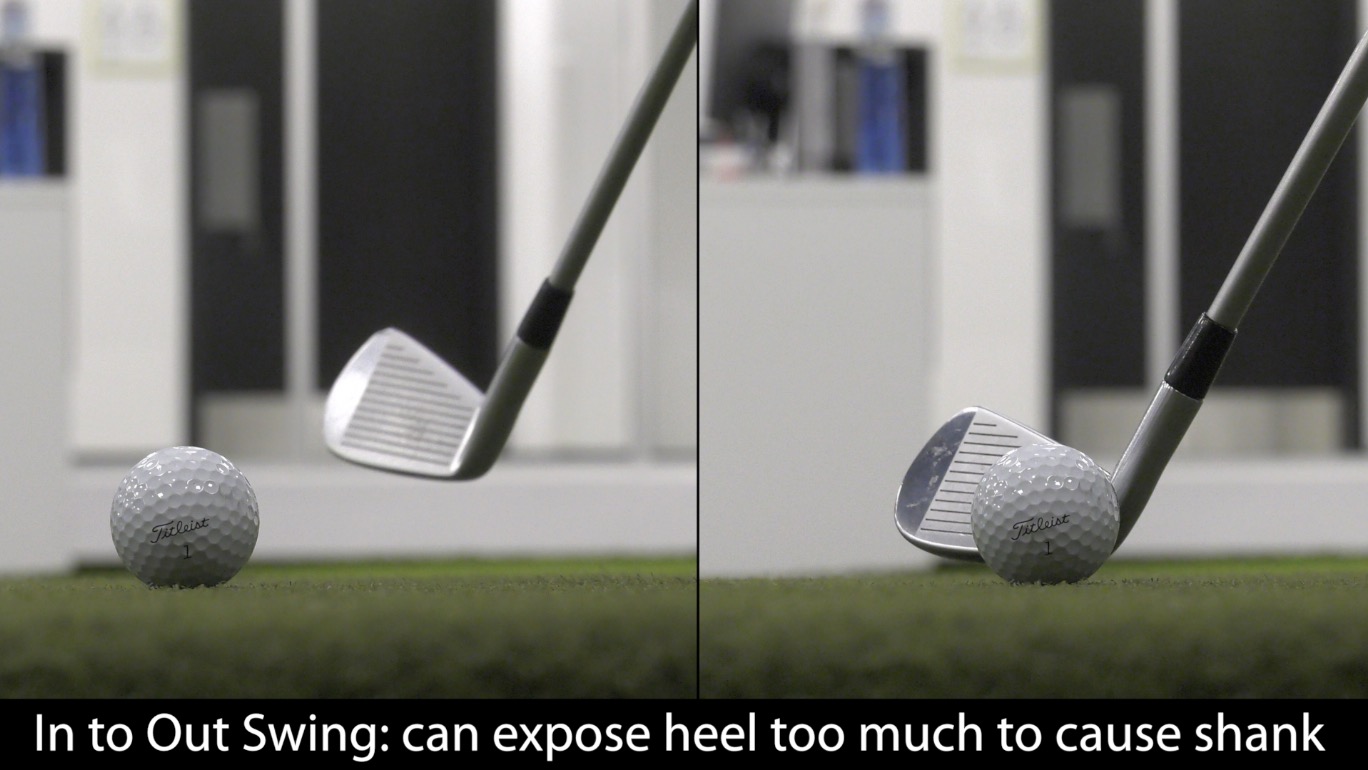
Why You Keep Shanking Chip Shots
Now, if you keep shanking your chip shots, you may be dealing with a different issue than the two I just mentioned. When it comes to chipping, you should look for the cause of your shank in one of these two places:
- Your Setup: Are your hands too far forward when you take your setup? Positioning your hands too far towards the target causes the club face to naturally rotate to the right (if you’re right-handed). This is what we call an open club face. And when you open the face, you bring the heel closer to the ball.
- Your Golf Swing Motion: Do you drag the club inside, closer to your body on your backstroke? If you do, you’re setting yourself up to expose the heel as you swing through. The better approach is to swing straight back and straight through.
(Side note: If you could use a little more help with your chipping, I recommend checking out the new Short Game System.)
How to Stop the Shanks in Golf
So how do you correct these bad habits?
There are a few tricks you can use to warm up before a round and make adjustments during the game. I’ll also share some drills to help get proper form into your body.
First, let’s take a look at how you can master the swing plane problem that’s holding you back.
The Anti-Shank Warmup for All Levels
Whether you’re a high handicapper or a low handicapper, prep for your next round with this simple exercise.
Stand with your arms straight out to the side. They should be in line with your shoulders, palms up.
- Take your proper golf posture.
- Rotate back as you would on your golf swing.
- Rotate forward as though you are swinging through.
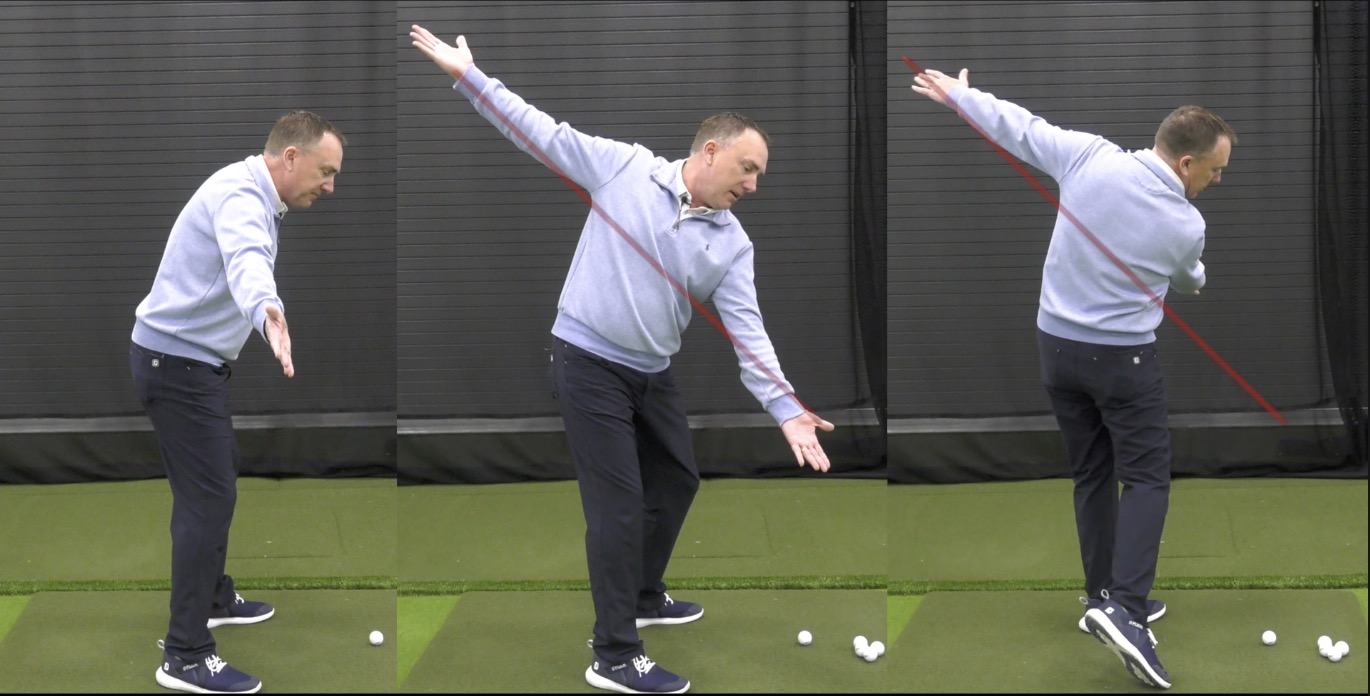
Your arms should remain on a neutral plane on the backswing and downswing.
But if you’re a high handicapper, you may notice that you naturally shift to bring your arms out and across, rising above the swing plane you established on your backswing.
If you’re a low handicapper, you may notice that your arms want to travel in and under on the downswing.
This exercise reveals where your bad habits are and helps you make corrections before your round.
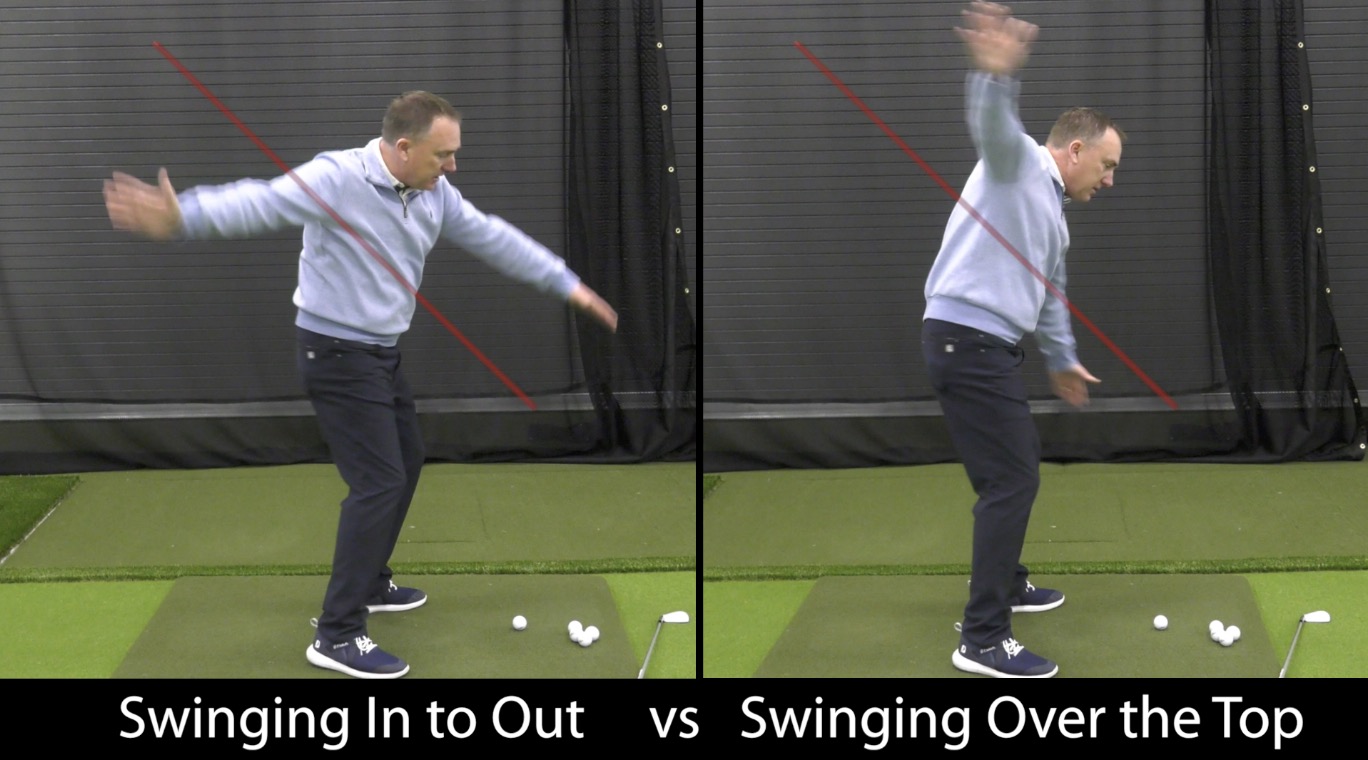
Tips for Stopping the Shank on Chip Shots
You probably already worked this one out for yourself. But as a quick reminder, when you take your chip shots, you want to work on establishing these two habits:
- Check your hands at setup. Make sure they’re not too far forward towards the target.
- Be sure to swing straight back and straight through.
Now for some drills to get these changes into your body.
Drills to Prevent Golf Shanks
Next time you’re at the driving range or practicing your garage, take a little extra time to run a shank drill. Choose whichever one (or ones) best applies to your golf game.
High Handicapper Drill
I call this one the TV Drill. You’re going to want a 6 or 7 iron for this one.
- Take your regular golf stance.
- Close your stance by shifting your trail foot farther back than your lead foot.
- Take your backswing.
- As you swing forward, be mindful of the handle. You want the handle to travel down, then up and to the right, ultimately rotating so your lead palm faces up.
When you think about directing the handle in this way, you force yourself out of that habit of swinging to the outside.
Low Handicapper Drill
If you’re a stronger golfer who still can’t escape the dreaded golf shank, try this drill. Again, use a 6 or 7 iron.
- Take your regular golf stance.
- Open your stance by shifting your lead foot farther back than your trail foot.
- Take your backswing.
- As you swing forward, be mindful of your lead shoulder and the wall behind you. (If there is no wall, imagine one.) You want the lead shoulder to stay low and work back towards the wall.
This adjustment helps you get back on the correct swing plane so you can center your contact with the golf ball.
Chip Shot Drill
Now, here’s a drill I love for eliminating the golf shank in your chip shot. For this one, you need two tees and an alignment rod.
- Lay the alignment rod on the ground alongside your golf ball. The rod should point at the flag or target.
- Put a tee at each end of the alignment rod.
- Remove the rod. You should now have an imaginary straight line between those two tees with your ball at the center.
- Set up your shot. Make sure your shaft is in a neutral position and your hands are not too far forward.
- Swing straight back and through, careful to make sure your clubhead passes over both the back and front tee evenly.
This is one of the simplest golf lessons for both checking your chipping motion and getting the feel of proper swing form in your body.
Thoughts? Questions? Comments?
These may seem like simple tips, but they address the vast majority of problems I see in golfers who struggle with the shank. Whether you are a casual amateur golfer or play for a living, hitting a shank happens to all of us at some point. But if you make these adjustments and run these drills regularly, I can almost guarantee you’ll see fewer shanks in your game.
Now I want to hear what you think. Has this advice been helpful? Do you have any questions? Any tips of your own you’d like to share? Join us in the comments!
For more in-depth golf tips, visit us at GreatGolfTipsNow.com. This golf instruction is completely free and packed with detailed advice to help you play better golf!



The shank 9 times out of 10 is caused by the hips being to far forward. The first shank is physical the next one is mental. The brain assumes the ball is being hit way off the toe of the club and it starts making adjustments. This causes the hips to move forward to stop something that is not actually happening.
I’ve seen students shank chip shots and I ask them what part of the club it hit. Many times they tell me it hit off the toe.
Steve, good points, the shank can become as much mental as physical very quickly. Thanks for posting!
I understand the concept of the downswing causing the shank. Can I also have this happen with a faulty backswing which leads to the same thing?
Dave, the answer is yes and yes! Lot’s of things can cause a shank, here is a great video we did that will help https://youtu.be/SlghG3iEdzA
Yes – I have a pretty consistent problem with shanks – I have realized that my hands and forearms want to move under my swing plane and outward toward the ball in the downswing which causes the hozel to interact with the ball first. I used to be a 5 handicap but am now a 9 at best because of the shanks – do you have any suggestions?
Thanks,
John,
Thanks for reading and asking. Here you go https://youtu.be/99rYblWsqrY
Best of luck!